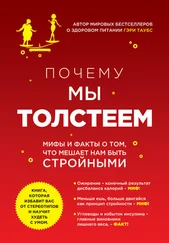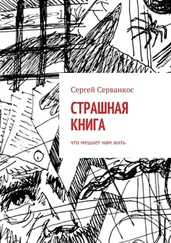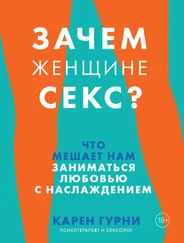Peters, E. (1996). Torture (expanded ed.). Philadelphia, PA: University of Pennsylvania Press. (Original work published 1985.)
Petrides, M. (2005). The rostral-caudal axis of cognitive control within the lateral frontal cortex. In Dehaene, S., Duhamel, J., Hauser, M., & Rizzolatti, G. (Eds.), From monkey brain to human brain: A Fyssen Foundation symposium (pp. 293–314). Cambridge, MA: The MIT Press.
Pierotti, R. J., & Fogg, B. R. (2017). The First Domestication: How Wolves and Humans Coevolved . New Haven and London: Yale University Press.
Pylyshyn, Z. (2003, March). Return of the mental image: are there really pictures in the brain? Trends in Cognitive Sciences, Vol. 7 No. 3, pp. 113–117.
Rattansi, P. (1988). Newton and the wisdom of the ancients. In Fauvel, J., Flood, R., Shortland, M. & Wilson, R. (Eds.), Let Newton be! (pp. 185–201). Oxford, England: Oxford University Press.
Ray, E. (2006). Foreword. In H. Alleg, The question (J. Calder, Trans.), (pp. vii – xii). Lincoln, NE: U of Nebraska Press. (Original work published 1958.)
Riby, D. M., & Hancock, P. J. (2008). Viewing it differently: Social scene perception in Williams syndrome and autism. Neuropsychologia, 46 (11), 2855–2860.
Rizzolatti, G., & Buccino, G. (2005). The mirror neuron system and its role in imitation and language. In Dehaene, S., Hauser, M. D., Duhamel, J. R., & Rizzolatti, G. (Eds.), From monkey brain to human brain: A Fyssen Foundation symposium (pp. 213–234). Cambridge, MASS: MIT Press.
Robin, C. (2004). Liberalism at Bay, conservatism at play: Fear in the contemporary imagination. Social research: An International Quarterly , 71 (4), 927–962.
Roux-Girard, G. (2009). Plunged alone into darkness: Evolution in the staging of fear in the alone in the dark series. In Perron, B. (Ed.), Horror video games: Essays on the fusion of fear and play (pp. 145–167). North Carolina: McFarland & Company, Inc.
Rushkoff, D. (2019) Team Human. New York, NY: Norton Sibrava, N. J., & Borkovec, T. D. (2006). The cognitive avoidance theory of worry. Worry and its psychological disorders: Theory, assessment and treatment, 239–256.
Sandseter, E. B. H. (2009). Children's expressions of exhilaration and fear in risky play. Contemporary Issues in Early Childhood , 10 (2), 92–106.
Sartre, J. (2006). Preface. In H. Alleg, The question (J. Calder, Trans.), (pp. xxvii – xliv). Lincoln, NE: U of Nebraska Press. (Original work published 1958).
Schaller, M. (2014, Oct). When and how disgust is and is not implicated in the behavioral immune system. Evolutionary Behavioral Sciences , 8 (4) pp. 251–256.
Schaller, M., & Park, J. H. (2011). The behavioral immune system (and why it matters). Current Directions in Psychological Science , 20 (2), 99–103.
Schaller, M., Park, J. H., & Mueller, A. (2003). Fear of the dark: Interactive effects of beliefs about danger and ambient darkness on ethnic stereotypes. Personality and Social Psychology Bulletin, 29 (5), 637–649.
Schiff, S. (2015). The Witches: Salem , 1692. UK: Hachette.
Schmidt, N. B., Richey, J. A., Zvolensky, M. J., & Maner, J. K. (2008). Exploring human freeze responses to a threat stressor. Journal of Behavior Therapy and Experimental Psychiatry, 39 (3), 292–304.
Scott, R. (2006). The aesthetic faculty. In Turner, M. (Ed.) The artful mind: Cognitive science and the riddle of human creativity (pp. 211–224). New York, NY: Oxford University Press.
Shapin, S. (2018). The scientific revolution. (2nd ed.) Chicago & London: University of Chicago Press. См.: Шейпин С. Научная революция // Деар П., Шейпин С. Научная революция как событие. – М.: Новое литературное обозрение, 2015.
Shipman, P. (2015). The invaders. How humans and their dogs drove Neanderthals to extinction . Cambridge, MA: Harvard University Press. См.: Шипман П. Захватчики: Люди и собаки против неандертальцев. – М.: Альпина нон-фикшн, 2019.
Shklar, J. (1989). The liberalism of fear. In Rosenblum, N. L. (Ed.), Liberalism and the moral life (pp. 21–38). Cambridge, MA: Harvard University Press.
Siviy, S. M. (1998). Neurobiological substrates of play behavior: glimpses into the structure and function of mammalian playfulness. In Beckoff, M. and Byers, J. (Eds.), Animal play: Evolutionary, comparative, and ecological perspectives (pp. 221–242). Cambridge, UK: Cambridge University Press.
Siviy, S. M. (2016). A brain motivated to play: insights into the neurobiology of playfulness. Behaviour, 153 (6–7), 819–844.
Siviy, S. M., & Harrison, K. A. (2008). Effects of neonatal handling on play behavior and fear towards a predator odor in juvenile rats (Rattus norvegicus) . Journal of Comparative Psychology, 122 (1), 1–8.
Slade, A. (2014). Imagining fear: Attachment, threat and psychic experience. Psychoanalytic Dialogues , 24:253–266: Taylor & Francis Group, LLC.
Solnit, R. (2016). Hope in the dark: Untold histories, wild possibilities. Chicago, Illinois: Haymarket Books.
Spitz, E. H. (1988). The artistic image and the inward gaze: toward a merging of perspectives. Psychoanalytic Revie w, 75 (1), 111–128.
Spitz, E. H. (1996). Between image and child: Further reflections on picture books. American Imago, 53 (2), 177–190.
Steen, F. (2006). The aesthetic faculty. In Turner, M. (Ed.) The artful mind: Cognitive science and the riddle of human creativity (pp. 57–72). New York, NY: Oxford University Press.
Stevens, J. R., & Hauser, M. D. (2005). Cooperative brains: Psychological constraints on the evolution of altruism. In Dehaene, S., Duhamel, J., Hauser, M., and Rizzolatti, G. (Eds.), From monkey brain to human brain: A Fyssen Foundation symposium (pp. 159–187). Cambridge, MA: The MIT Press.
Stiglitz, J. (2009). Progress, what progress? OECD Observer, 272 .
Strachey, J. (1959). Introduction. In Freud S., The standard edition of the complete psychological works of Sigmund Freud, Volume XX (1925–1926): An autobiographical study, inhibitions, symptoms and anxiety, the question of lay analysis and other works (pp. 75–176). London: The Hogarth Press.
Suddendorf, T. (2013). The Gap: The science of what separates us from other animals. New York, NY: Basic Books.
Suddendorf, T. (2013). Mental time travel: continuities and discontinuities. Trends in cognitive sciences , 17 (4), 151–152.
Suler, J. (1996). Mental imagery in the organization and transformation of the self. Psychoanalytic Review , 83 (5), 657–672.
Summers, F. (2000). The analyst's vision of the patient and therapeutic action. Psychoanalytic Psychology , 17 (3), 547–564.
Takahashi, L. K., Nakashima, B. R., Hong, H., & Watanabe, K. (2005). The smell of danger: a behavioral and neural analysis of predator odor-induced fear. Neuroscience & Biobehavioral Reviews , 29 (8), 1157–1167.
Tillich, P. (2000) . The courage to be (2nd ed.). New Haven & London: Yale University Press. (Original work published 1958.) См.: Тиллих П. Мужество быть. – М.: Модерн, 2014.
Torchia, N. J. (1988). Curiositas in the early philosophical writings of Saint Augustine. Augustinian Studies , 19, 111–119.
Tranel, D., Gullickson, G., Koch, M., & Adolphs, R. (2006). Altered experience of emotion following bilateral amygdala damage. Cognitive Neuropsychiatry, 11 (3), 219–232.
Читать дальше
Конец ознакомительного отрывка
Купить книгу












